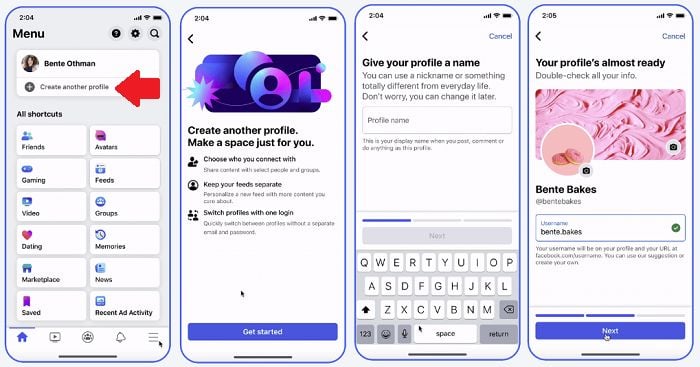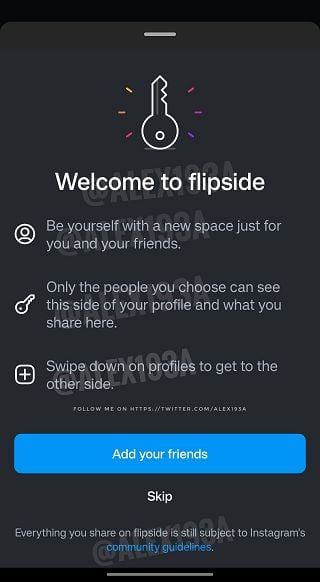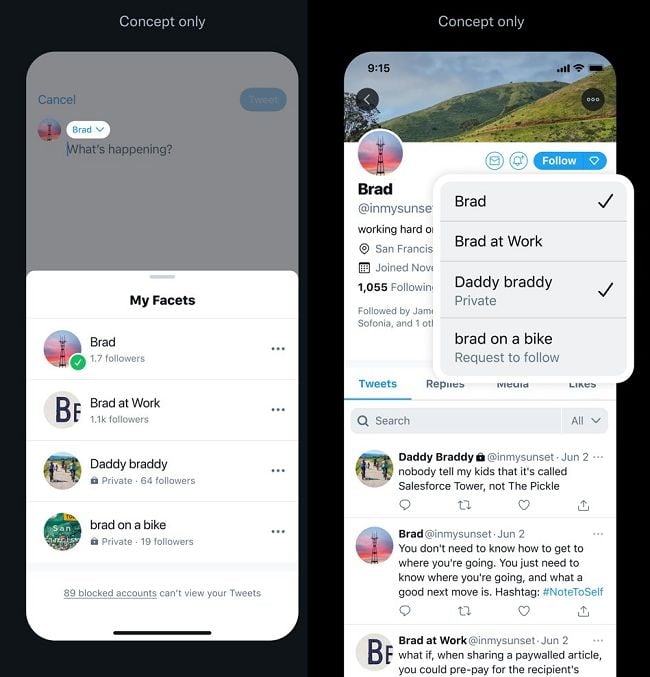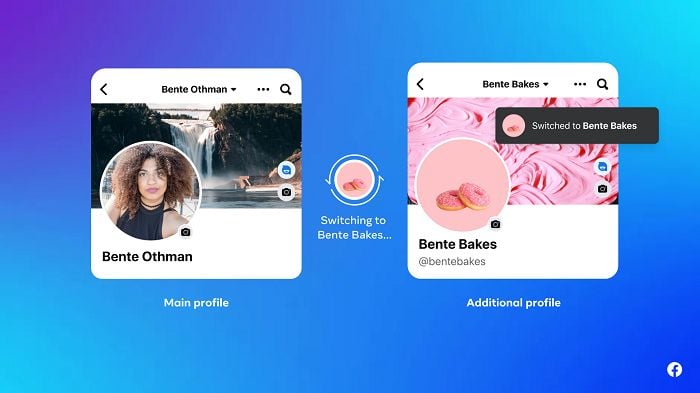With social media usage fragmenting, and more people now sharing more in private groups, it seems inevitable that we’ll eventually move towards segmented social profiles, enabling users to engage in different types of conversations, without annoying the people who follow them for different reasons.
We’ve seen various experiments on this front, with Instagram and Facebook now enabling users to create alternate profiles, so that they can feel free to engage in different communities, without cross-polluting these variable streams.

Instagram’s also experimenting with more enclosed group sharing options, including this new “Flipside” experiment, which will provide an alternative profile space just for you and your chosen connections to engage.

That seems to be the way that things are headed, and as such, we may soon see more specific customization options along these lines, which will make it easier for users to post into topical personas, and enable followers to choose an aspect, or aspects, that they want to hear from.
Twitter actually experimented with a more functional process along these lines back in 2021, with a process called “Facets”, which would enable users to post under certain personas attached to their main profile.

As you can see in this example, with Facets, users would be able to assign different topical personas within their main profile, with different profile images for each. So if you post about parenting, you could have a facet for that, and if you post about bike riding, that could also be another element. When you share an update, you would then be able to choose which persona each of your posts comes from, and followers could then choose to follow these more specific elements of your profile, so that they don’t also have to get your updates that are not relevant to them.
Because while I might like your cycling insights, I have zero interest in following a persona called “Daddy braddy”.
That could be a good, simple way to get people posting more often, which has become a bigger challenge over time, as users have gotten sick of seeing random, attention-seeking posts, and social networks have gradually moved more into entertainment.
Indeed, over the past year, Facebook activity has increased, while user posts have continued to decline. People are spending more time in social apps, but they’re increasingly watching short form video clips, and are not sharing as many of their own, original updates.
That’s not necessarily a bad thing for the apps themselves, attention is attention after all, and they can still sell ads based on such. But if users aren’t as engaged in their specific app, that also increases the chance that they can get a similar experience elsewhere, which could increase user churn as they lack that more compelling, more sticky experience.
Alternative profiles, Facets, enclosed group sharing options, all of these provide more ways to facilitate more sharing, in more ways, which could help to build upon the network value that will keep users more aligned to each app.
Any update like this increases friction, which is why they’re difficult to develop, but I do think that we’ll see more of these as time goes on, and users increasingly look to share their thoughts into more specific, aligned communities.
For marketers, that also adds new considerations around reach, and how to get your messaging in front of the right audience.
Right now, short-form video is probably the key broadcast medium, providing the most potential to maximize reach. But more siloed, enclosed groups will continue to complicate message delivery, and we’ll need to develop new ways to reach these audiences, as engagement behaviors shift.
In some ways, options like Facets better align with this, as more specific, topical sharing lends itself to more specific ad reach.
Which is another reason why I think we’ll see more of this, and if the platforms can come up with a simple way to entice more topical sharing, that could enable new forms of connection and community within social apps.



